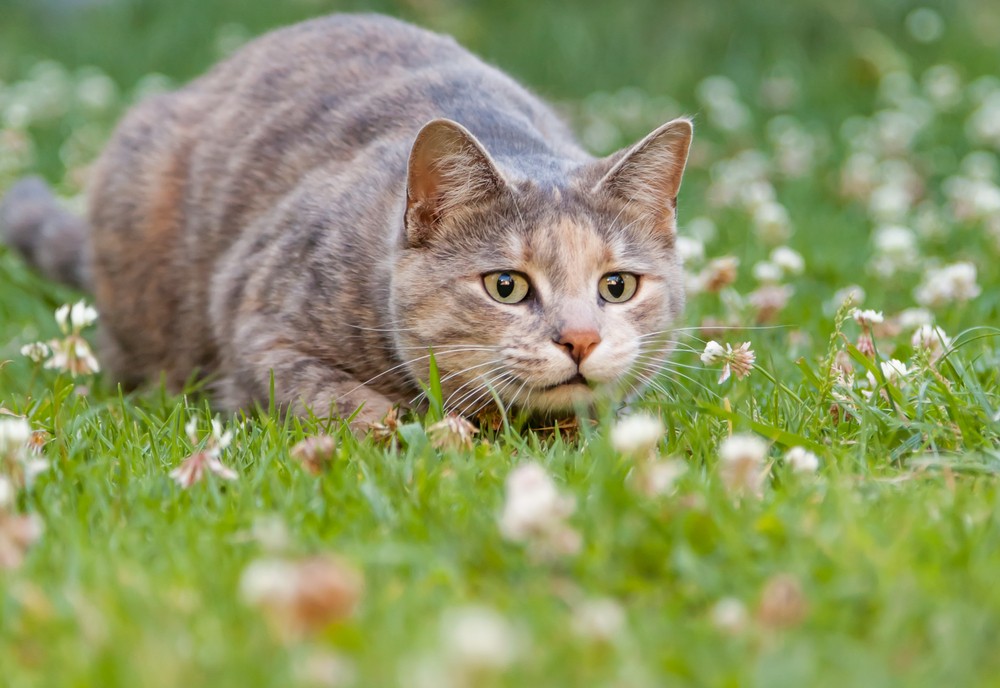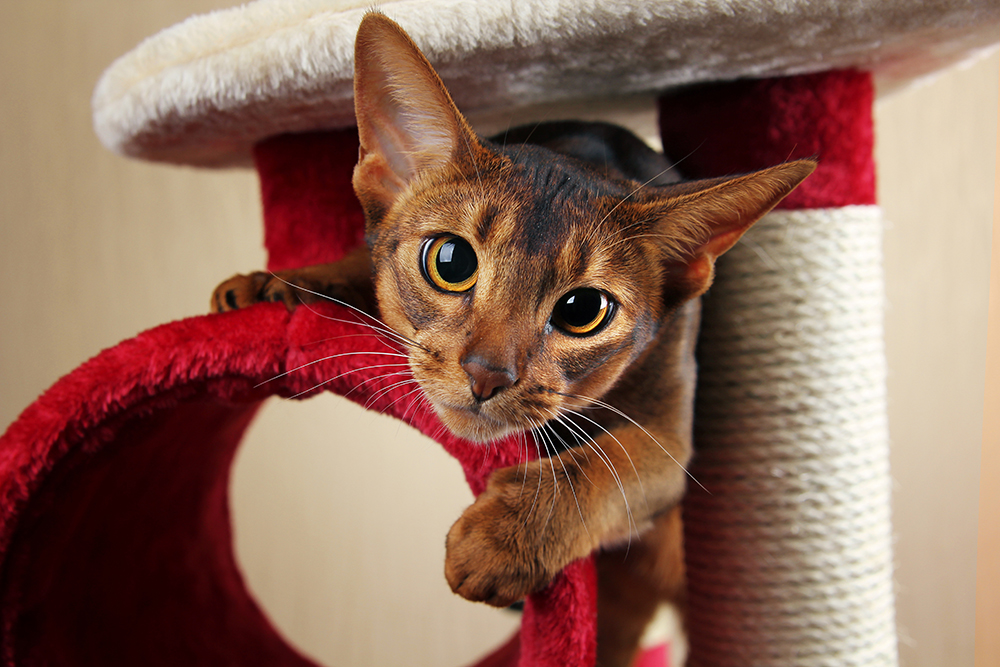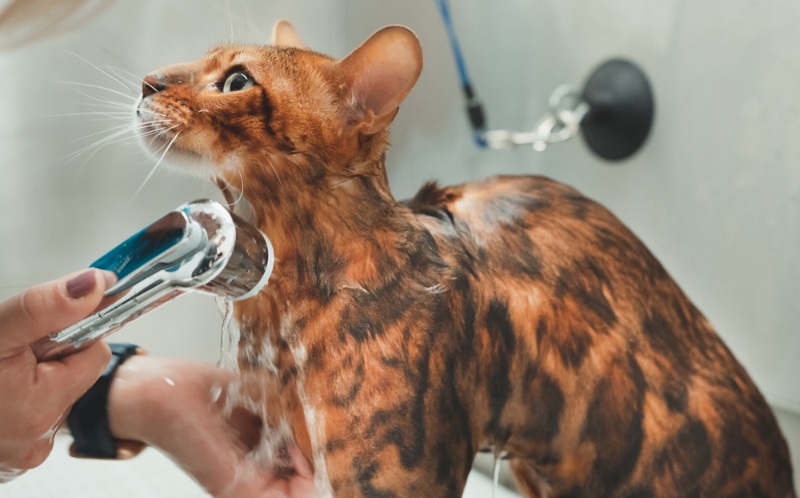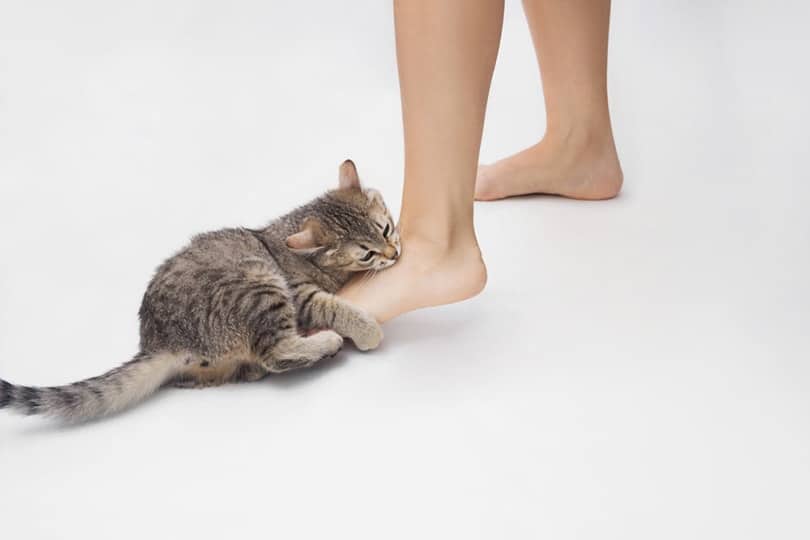Click to Skip Ahead
Our feline companions are fierce hunters (which you know if you’ve ever been brought a dead mouse). And if you’ve ever watched your cat when it’s gone on a hunting expedition, you might have wondered how exactly it knew that a mouse or a bug was nearby. Just how do cats find their prey?
And if cats can sense that mice and bugs are just waiting to be caught, does that mean our pets can also sense other animals, such as snakes? After all, if you have outside cats, it would be quite helpful if they could sense when a snake was slithering about.
Well, our cats can sense snakes, and there are a few ways they can do so!

How Do Cats Sense Snakes?
There are three main ways our felines are able to sense when a snake is around—scent, sound, and a cat’s natural hyperawareness.
1. Scent
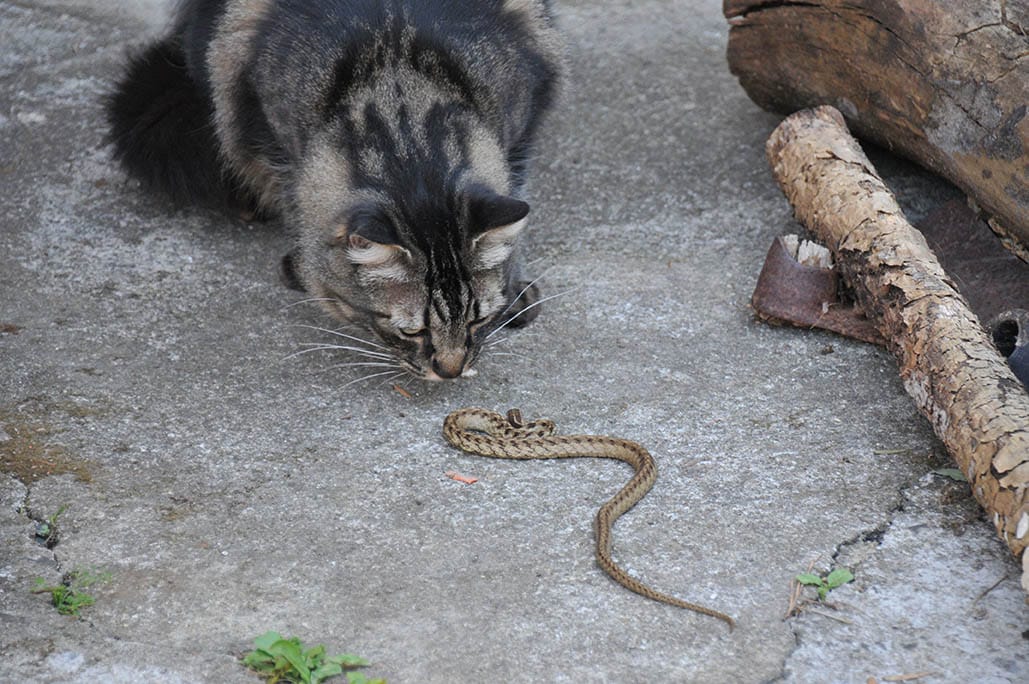
Cats have an incredible sense of smell; where humans have roughly 5 million receptors in the nose to help us pick up scents, cats have anywhere from 45 to 200 million receptors! In fact, there’s a good chance your pet can smell things up to 4–12 miles away from them at any given time. This ability to smell so much and from so far away is a huge asset in helping felines pick up when a snake is nearby.
In particular, cats can smell secretions from a snake’s scent glands meant to repel predators. In a study to see how felines responded to these secretions, it was found that cats had a stronger response to the secretions than to skin that had been shed from a snake. This indicates these secretions are likely what a cat sniffs out that enables it to sense a snake.
2. Sound
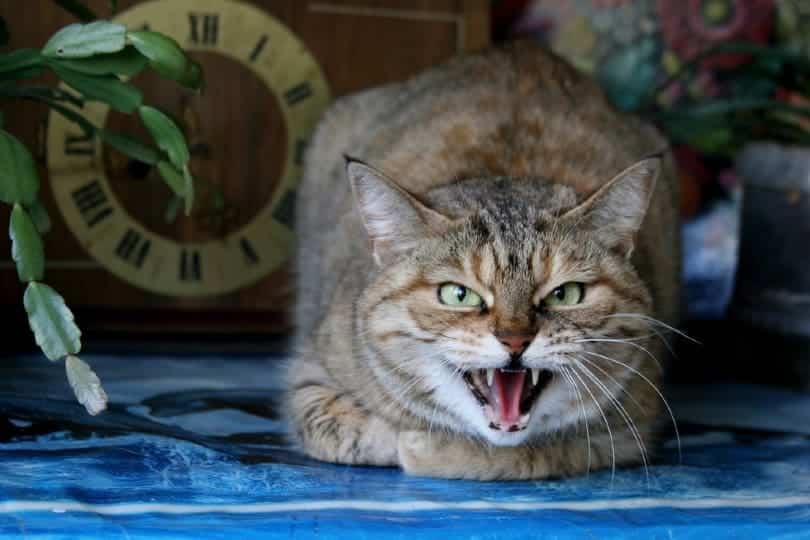
The ability to smell millions of things from miles away isn’t the only strong sense felines have. Our kitty friends also have an amazing sense of hearing! Whereas humans hear things in the 20 Hz–20 kHz range, cats are able to hear anything in the 48 Hz–85 kHz range (and can hear sounds from 2,300–2,900 feet away). This ability makes it much easier for our cats to hear when a snake is slithering through the grass, and then locate it.
3. Hyperawareness
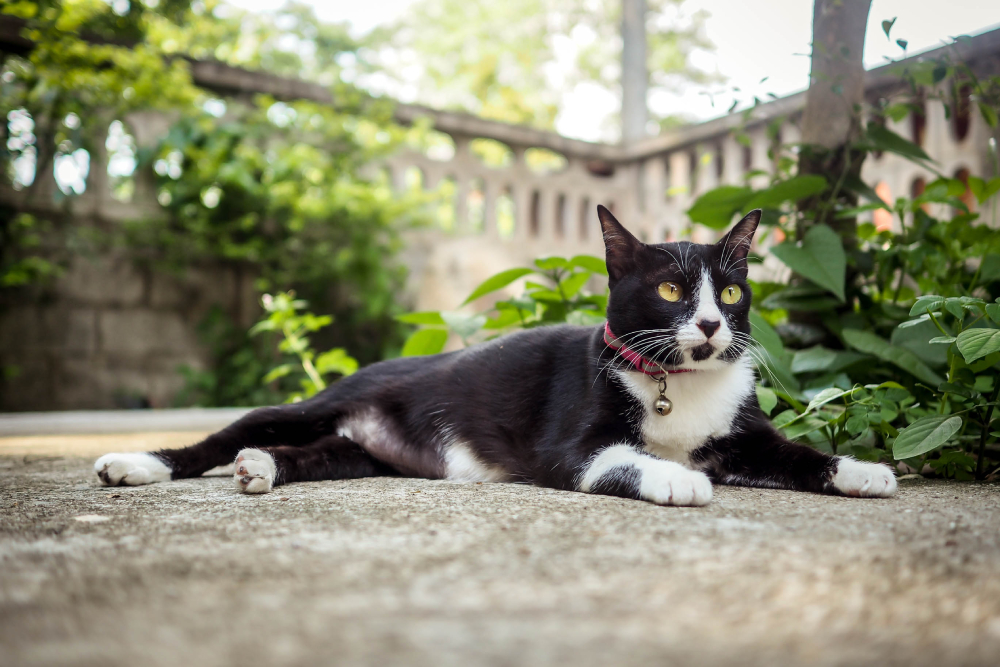
Cats may be predators, but they’re aware there are larger predators than them out there. This means when they’re awake, they are hyperaware and alert to what’s going on around them. Blame it on natural instincts passed down from their wild ancestors. It’s for this reason your cat enjoys sitting on the highest object in the house so it can see everything around it and can occasionally be a bit jumpy.
This hyperawareness is good when outside because it enables your feline to see danger more easily—including sensing when a snake is nearby and whether it poses any threat.
Cats & Snake Bites
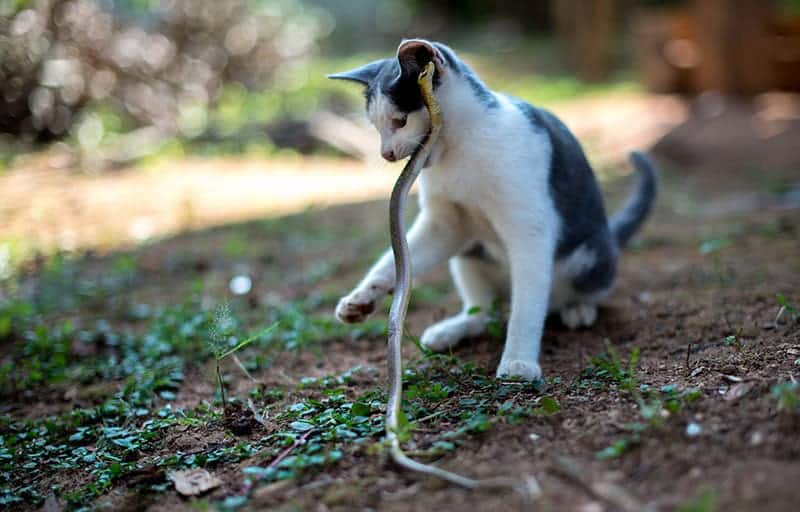
Felines and snakes are natural enemies (they are competing for similar food sources, after all) and ones that sometimes prey on each other. Though it’s more likely to find a cat stalking a snake than vice versa, it doesn’t mean that a snake won’t defend itself from a cat or attack first if it feels threatened. That could result in a snake bite for your pet.
What are the symptoms if a snake has bitten your cat? If your pet has gotten into a tangle with a snake and received a bite, you’ll see:
- Agitation
- Bleeding from the place that was bitten
- Breathing that is faster and shallower than normal
- Bruising and/or swelling around the bite
- Diarrhea or vomiting
- Drooling
- Fang marks
- Wobbly gait
- Lethargy
- Limping if the bite is on the legs or paws
- Paralysis
- Seizures
If you believe your feline has been bitten by a snake (or saw that it was bitten by one), you should take it to the vet right away. And if you are unsure whether the snake is poisonous, try to take a picture of it (or at least take a good enough look that you can give a good description to your vet).
If you need to speak with a vet but can't get to one, head over to PangoVet. It's an online service where you can talk to a vet online and get the advice you need for your pet — all at an affordable price!
 Final Thoughts
Final Thoughts
Cats can sense snakes when they are around! With a feline’s superior hearing and sense of smell, it’s easier for them to pick up on a snake’s scent gland secretions and movements even when you can’t see the snake. Your cat’s proneness to hyperawareness is also an asset in sensing snakes.
However, your cat might be tempted to hunt a snake down if it senses it, which could result in a snake bite. If that occurs, you’ll want to get your pet to its vet immediately and try to get a photo or a good look at the snake if you’re unsure what kind it is so your vet can identify whether it’s poisonous. This will enable your pet to receive proper treatment.
- Related Read: Do Cats Eat Snakes? Health Risks & Precautions
Featured Image Credit: SJ Duran, Shutterstock

